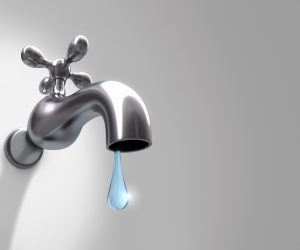 Thanks for joining us for the first in our two part series about saving water to save yourself money in your laundromat business. It seems like a simple and straightforward concept but this is an area that many laundromat owners overlook when it comes to saving money on their bottom line. Most business owners look to energy efficiency - counting those kilowatts- to keep business costs low.
Thanks for joining us for the first in our two part series about saving water to save yourself money in your laundromat business. It seems like a simple and straightforward concept but this is an area that many laundromat owners overlook when it comes to saving money on their bottom line. Most business owners look to energy efficiency - counting those kilowatts- to keep business costs low.
The expert staff at T & L has used their many decades of experience to put together this series on how saving water saves you money. If you're looking for Huebsch dealers in North Carolina, have you thought about using something better? Speed Queen and Continental are great choices. Call T & L today to learn how we can save you money!
Saving Water Is Saving Money
According to the Alliance for Water Efficiency, more than 50 percent of a commercial laundromat's operating expenses come from water and wastewater costs. No wonder water conservation and efficiency is one of the areas T & L focuses on when they work with new laundromat owners or clients that are looking to replace their existing equipment.
Many commercial laundry facilities have moved to more efficient machines - some using as little as 2.5 gallons of water per pound - however, this has very little impact on energy costs. High efficiency washers can reduce the amount of water needed by almost 50%. New federal standards and guidelines have sparked a trend of more laundromat owners moving towards a larger horizontal axis washers or front load washers in their facilities. These machines score better on the Water Factor scale and provide better efficiency and greater energy savings.
Some of these new machines can wash an entire load using as little as 9 gallons of water per load. That is a striking reduction from an average 32 to 38 gallons per load for non horizontal axis machines.
It is difficult to project the actual water savings with new equipment because this requires frequency of use estimates. This data can be difficult for owners to ascertain unless “coin counts” are regularly conducted and recorded in the laundromat. Rough estimates can be gauged by assuming that each machine runs 6 loads per business day.
Replacing single load washers with multi-load machines has been proven to provide substantial water savings. When paired with a larger number of available clothes dryers, customers report higher satisfaction at being able to pay a little more for single load convenience.
Choosing smart machines with load sensors can also greatly impact the amount of water your facility needs to use. By reducing the amount of water used for smaller or partial customer loads, you not only save water costs but allow the machine to be freed up more quickly to be used by another customer.
Using a wash water treatment system in your facility will also add up to big water savings. Reclaiming and reusing water for initial wash cycles can save an estimated 45 to 50 percent of total water use. Selecting the right type of system for your facility is key and your T & L representative can explain the proper considerations for each option.
Searching for Huebsch Dealers in North Carolina?
Are you searching for Huebsch dealers in North Carolina for your laundromat? Why not try Speed Queen or Continental instead? T & L Laundry Equipment can help!
Utilizing the experience and knowledge of the T & L Laundry Equipment staff makes upgrading your equipment or selecting your initial equipment easy. Our business is laundry equipment and supporting laundromat owners. We understand the unique nature of this business and work hard to ensure that you as an owner are happy and that your customers are happy. Service after the sale is what sets T & L Laundry Equipment apart. We don’t just deliver, set up and walk away - we are with you throughout the process and beyond. Call us today!
Make sure to come back for the second part of our series on water conservation when we share our top tips for things owners can do to ensure water efficiency.

